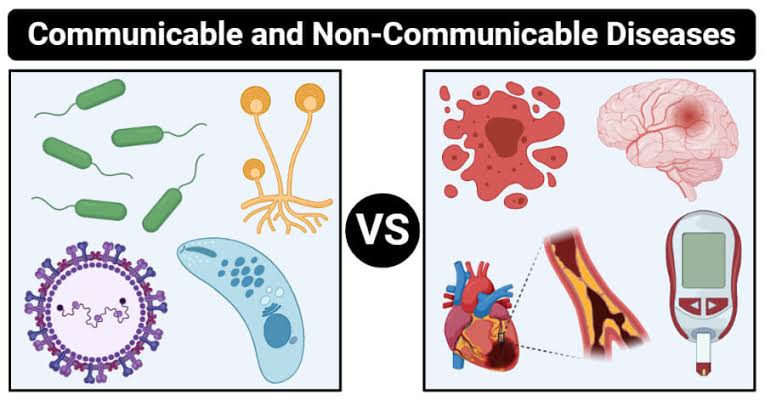The difference between communicable and non-communicable diseases
Infectious diseases are diseases that result from viruses, bacteria and fungi that enter the body and disrupt one of the organs or destroy immunity, or cause a defect in the function of a component in the body. Genes, immune defects, aging, and hereditary diseases. Non-communicable diseases are not transmitted from one person to another, such as diabetes. We do not find that a person, for example, has infected his wife with diabetes, as for infectious diseases, the ways of transmission are many, such as a mosquito bite, or by drinking contaminated water, Or transmission from one person to another by coughing, sneezing, and so on.
Examples of infectious diseases are many and varied, among which we mention the well-known Covid-19, inflammatory bowel disease, influenza, measles, smallpox, hepatitis, and human immunodeficiency virus. As for non-communicable diseases, they are many such as diabetes, cancers, hypertension and Alzheimer’s.
Ways to prevent infectious diseases for children
In order to reduce the chances of transmission of infection to children, there are some steps that must be adhered to to maintain the health of the child:
There should be more than one washroom in the house, one for preparing food, the other for bathing, and changing diapers for young children
Clean the bathrooms regularly, and make sure your child does not share their personal things with other children
Ensure that the toys that a small child puts in his mouth is sterile, because young people tend to put everything they see in front of them in their mouths to discover what the thing is.
Clean doors, wardrobes, toilet surfaces, and a young child’s diaper areas regularly.
Ensure that your child receives all necessary vaccinations
Properly store and preserve food, and serve it to children in a correct manner after cooking and preparing it
Ensure the safety of the milk that the child drinks
Teaching the child healthy habits that ensure his safety, such as washing hands after using the toilet, when arriving at school or home, before and after eating, after playing with sand, and after catching pets
Teaching children the importance of hygiene

